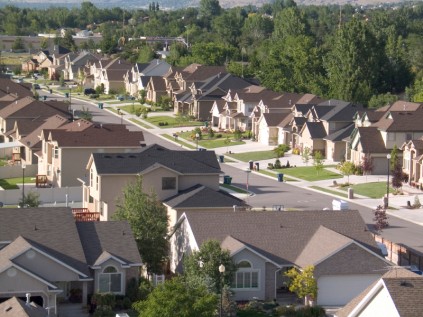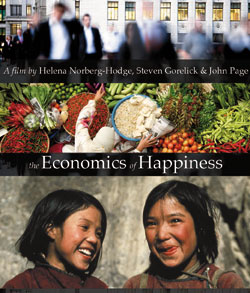 Suck it, Thoreau: Looks like big cities are the way to go if you’re looking to lower your environmental impact. According to a new study published in the journal Environment and Urbanization, carbon emissions in cities are lower than in the car-dependent burbs.
Suck it, Thoreau: Looks like big cities are the way to go if you’re looking to lower your environmental impact. According to a new study published in the journal Environment and Urbanization, carbon emissions in cities are lower than in the car-dependent burbs.
Okay, so you’ll still come out ahead if you live in an earthbag hut by the side of a lake and weave your own clothes out of cattails. But when it comes to non-rural areas, density is king. Public transportation and walkability reduce per-capita carbon emissions, especially in warmer cities that rely less on artificial heating.
This study focused in detail on the Toronto metro area, but this is not the first indicator that cities are cleaner than their reputation implies.
Suburbs are dead; dead last: Maps from the Center for Neighborhood Technology show that while cities have the highest emissions per square mile, suburbs have far and away the highest emissions per person. Yeah, a single acre in New York is going to pollute more than an acre of strip mall in Scottsdale, but that’s because everyone’s stacked like Ikea cabinets. On a per-person basis, cities rule and strip malls drool.
Density is pretty much the most important thing: A 2009 National Research Council report looked at the relationship between dense city layouts, vehicle use, and carbon, and recommended “policies that support more compact, mixed-use development and reinforce its ability to reduce [vehicle miles traveled], energy use, and CO2 emissions.” NRC reports can be a little dry, but here’s the upshot: Dense living is the way to go, and we should encourage it.
Impact per person is lower in cities, even though total impact may be higher: If you’re one of those holdouts who still loves long-form journalism (good on ya!), David Owen wrote a long piece about this in the New Yorker in 2004. (If you like even longer-form journalism, he wrote a book on it too.)
Because densely populated urban centers concentrate human activity, we think of them as pollution crisis zones. Calculated by the square foot, New York City generates more greenhouse gases, uses more energy, and produces more solid waste than most other American regions of comparable size. On a map depicting negative environmental impacts in relation to surface area, therefore, Manhattan would look like an intense hot spot, surrounded, at varying distances, by belts of deepening green.
If you plotted the same negative impacts by resident or by household, however, the color scheme would be reversed. My little town has about four thousand residents, spread over 38.7 thickly wooded square miles, and there are many places within our town limits from which no sign of settlement is visible in any direction. But if you moved eight million people like us, along with our dwellings and possessions and current rates of energy use, into a space the size of New York City, our profligacy would be impossible to miss, because you’d have to stack our houses and cars and garages and lawn tractors and swimming pools and septic tanks higher than skyscrapers. (Conversely, if you made all eight million New Yorkers live at the density of my town, they would require a space equivalent to the land area of the six New England states plus Delaware and New Jersey.)
Spreading people out increases the damage they do to the environment, while making the problems harder to see and to address.
Here come the numbers: Economist Edward Glaeser‘s got data and charts!
New York City has the largest gap in emissions between central city and suburbs of any metropolitan area in the country-unsurprisingly, since New York’s central city is the epitome of dense urban living. Our estimate is that an average New York City resident emits 4,462 pounds less of transportation-related carbon dioxide than an average New York suburbanite. The reductions in carbon emissions from home heating and electricity are comparably large, thanks to New York’s famously tiny apartments. Manhattan is one of the greenest places in America.



